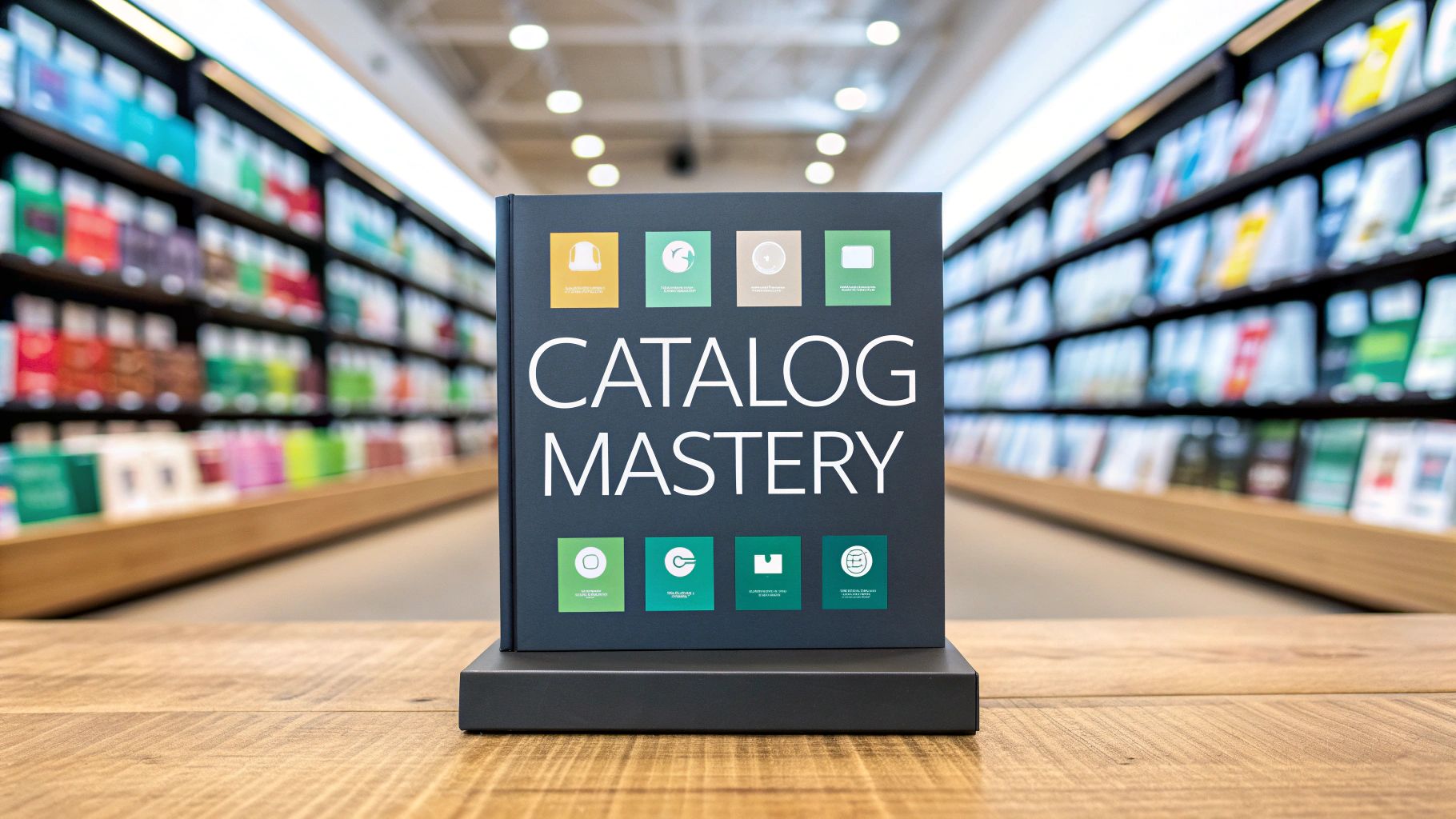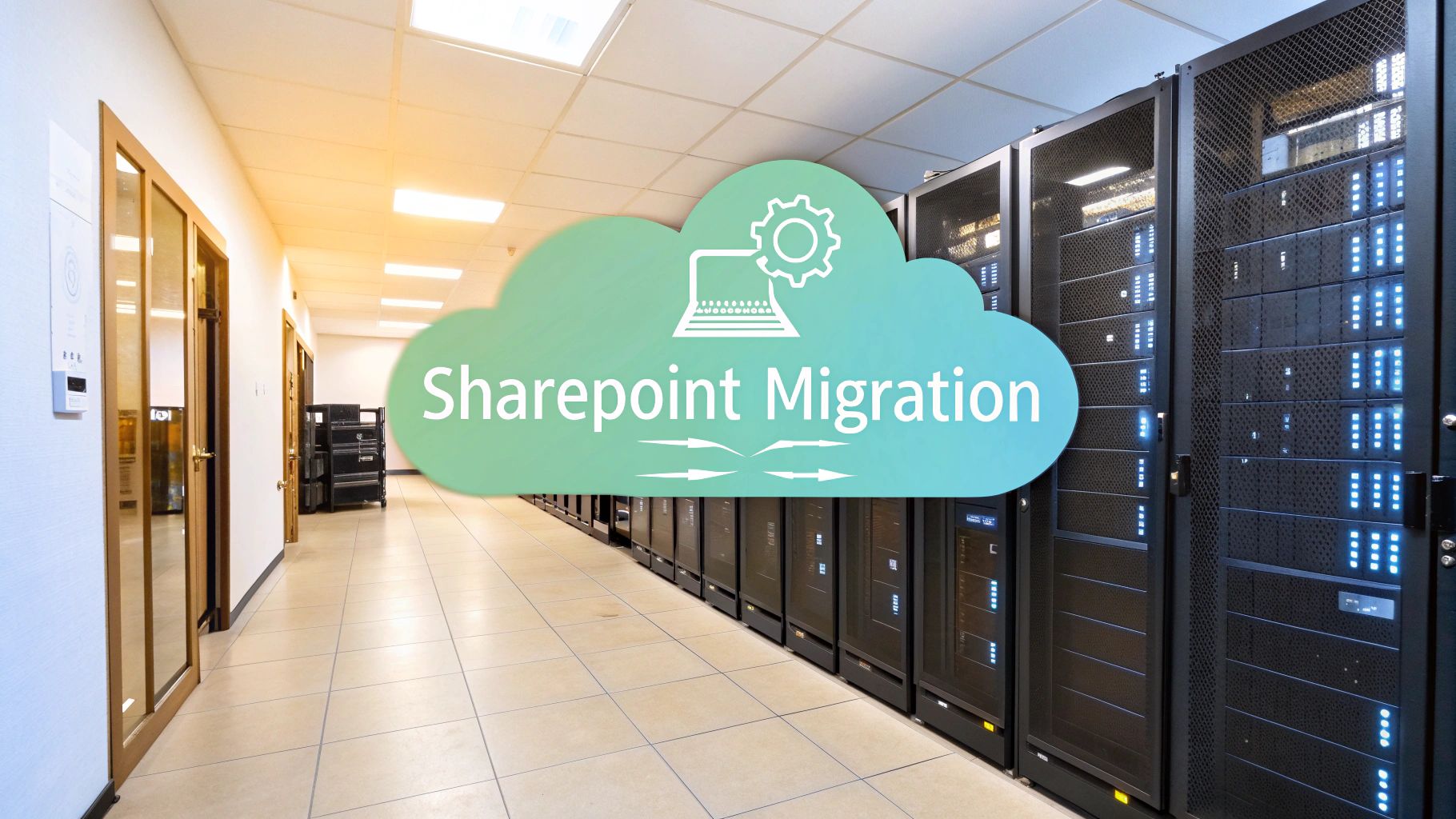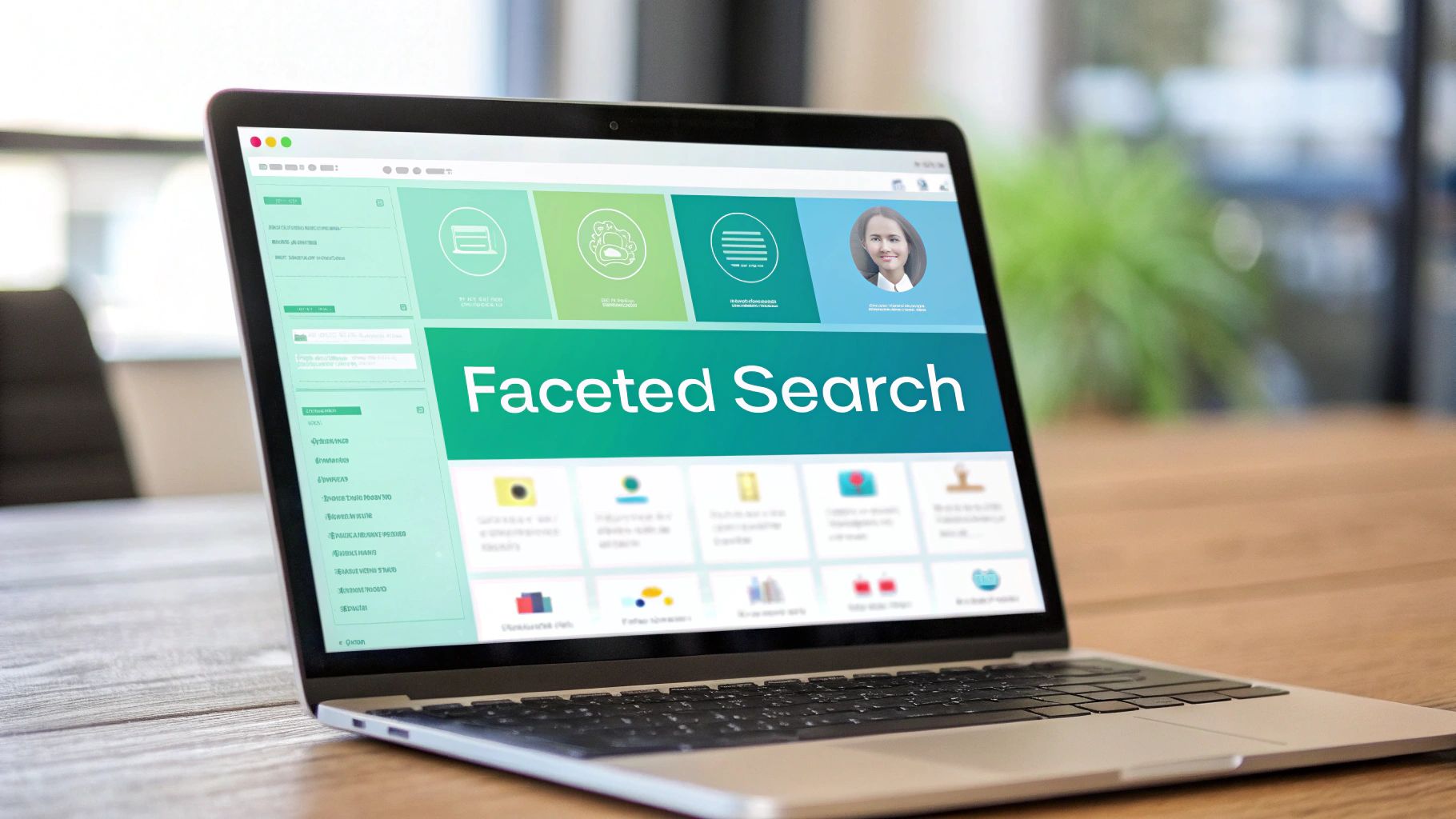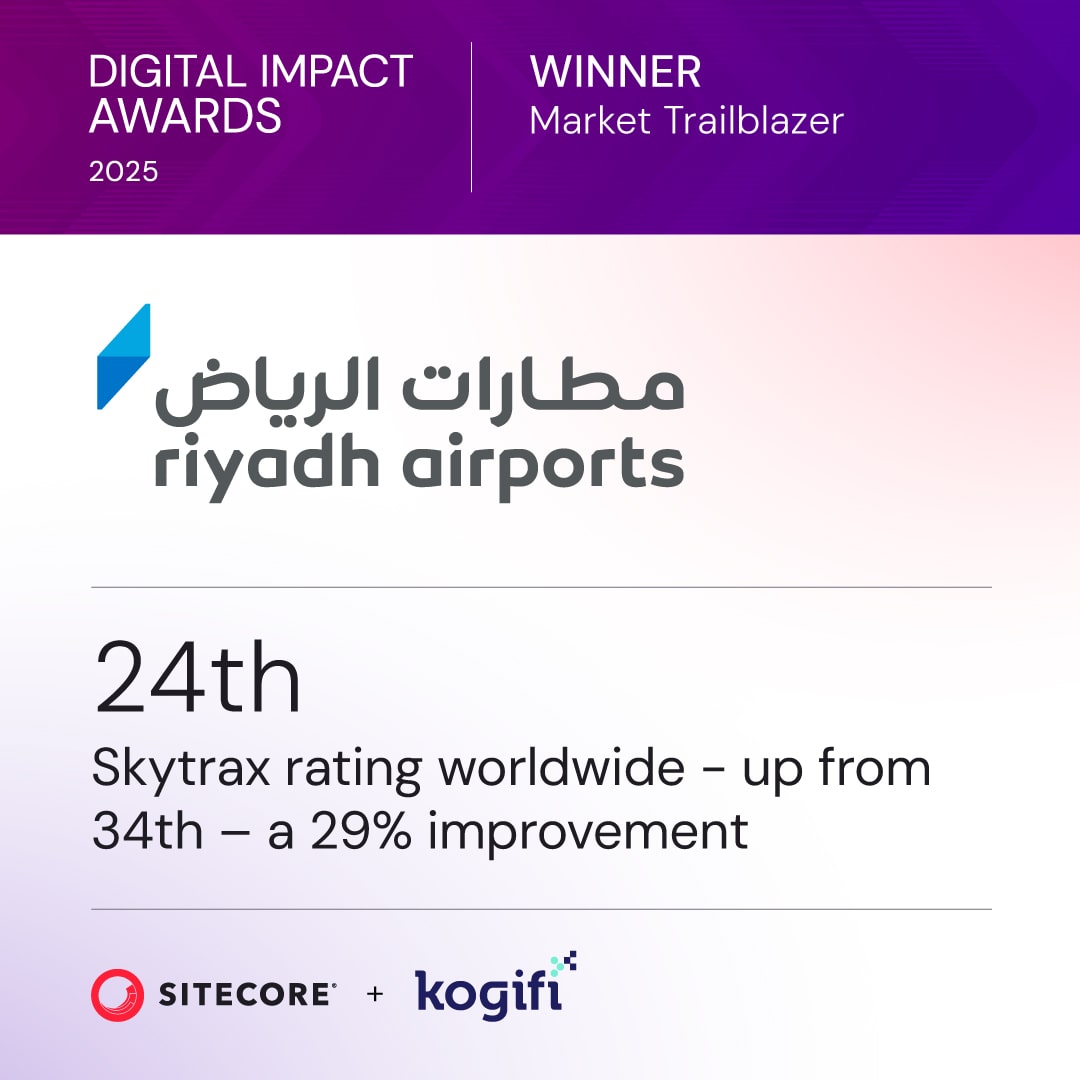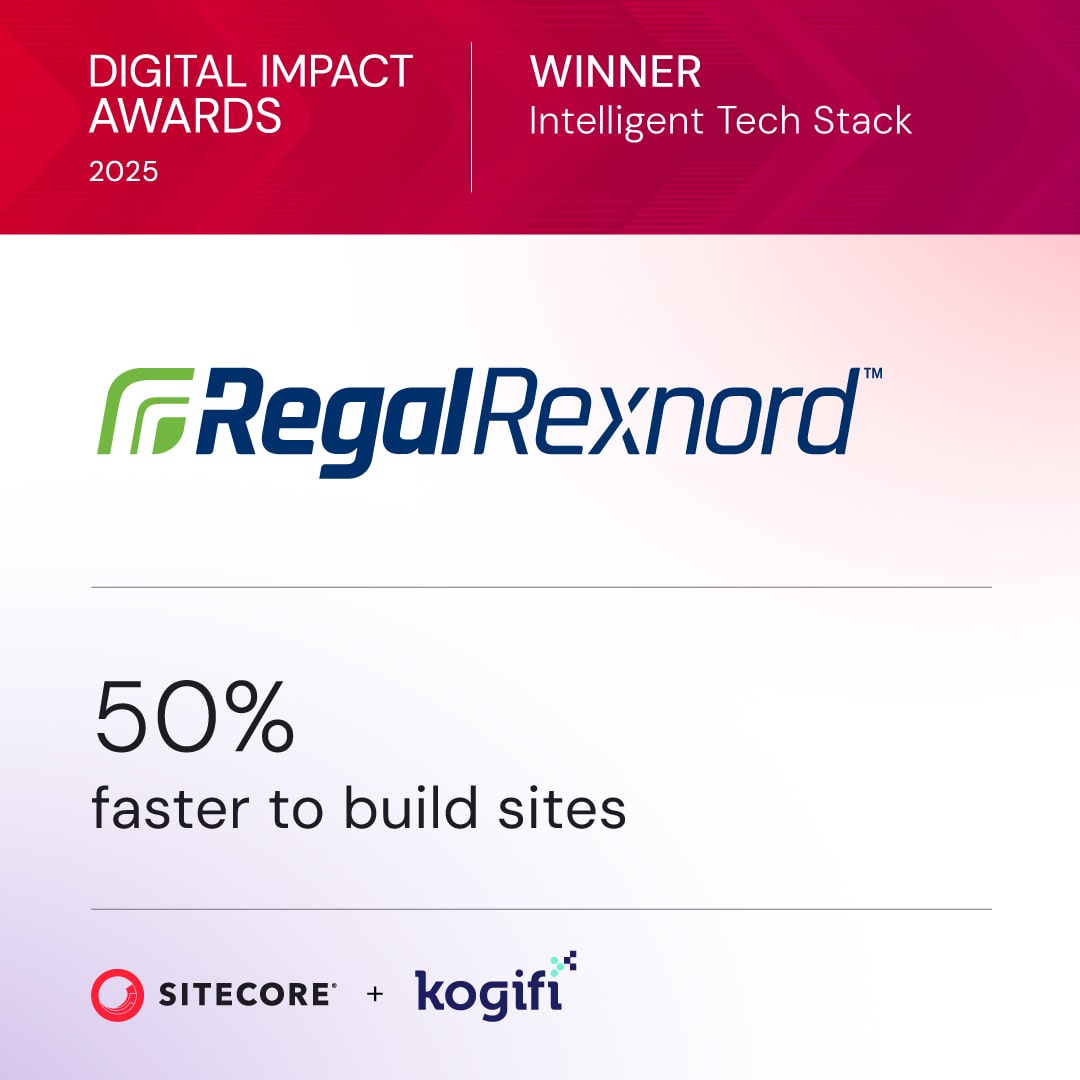Let's be honest, marketing has changed. It's no longer about shouting the loudest and hoping someone listens. The digital transformation of marketing is about ditching the old playbook of broad, one-way campaigns and embracing data-driven, personalized conversations. It’s a fundamental shift in how you think, operate, and connect with customers, focusing on building lifetime value instead of just chasing the next sale.
What Is the Digital Transformation of Marketing

Think of traditional marketing as a megaphone. You craft one message and blast it out to a massive audience, crossing your fingers that it connects with a few people. It’s impersonal, inefficient, and nearly impossible to measure with any real accuracy. The digital transformation of marketing throws out the megaphone and replaces it with countless intelligent, one-on-one conversations happening at the same time across every channel imaginable.
This isn’t just about running a social media ad or sending a weekly newsletter. It's a deep, foundational change that reconfigures your strategy, operations, and technology from the ground up. It means unifying customer data, automating key interactions, and personalizing content on the fly. This isn't a small trend—global spending on digital transformation is expected to skyrocket to $3.9 trillion by 2027. You can get a closer look at the numbers driving this shift by reviewing the latest digital transformation statistics.
The Core Mindset Shift
At its heart, this transformation is about moving from being company-centric to completely customer-centric. Instead of pushing products, modern marketing pulls customers in by delivering real value at every single touchpoint. That requires a deep, almost obsessive, understanding of the customer journey—from their first Google search to their tenth purchase.
To make this happen, you need a technology backbone that can collect, interpret, and act on customer signals instantly. This is where a composable Digital Experience Platform (DXP) like Sitecore becomes indispensable, providing the tools needed to build the seamless, data-rich experiences that customers now demand.
The goal is no longer just to close a deal. It's to build a relationship so strong that the customer chooses you over and over, turning a single transaction into lasting loyalty.
To truly grasp this evolution, it helps to see the old and new approaches side-by-side. The table below breaks down the key differences between traditional marketing and its digitally transformed counterpart.
Evolution from Traditional to Digitally Transformed Marketing
This comparison makes it clear: the shift is about more than just technology. It’s a complete reimagining of the marketing function, moving from isolated tactics to a cohesive, customer-focused ecosystem.
From Silos to Synergy
One of the biggest hurdles in this evolution is breaking down internal silos. In old-school models, marketing, sales, and service teams often work in their own worlds, with separate goals, tools, and data. The result? A disjointed and often frustrating experience for the customer. A true digital transformation connects these functions, creating a unified ecosystem where data flows freely.
This is where internal collaboration tools become critical. For instance, creating a centralized hub with SharePoint for marketing assets, campaign plans, and brand guidelines ensures everyone is on the same page. When your teams can easily access approved materials and collaborate on content, they're far better equipped to power the sophisticated personalization engines of a platform like Sitecore.
This internal synergy is the engine that drives a superior customer experience. The move from isolated efforts to a cohesive strategy is what defines a successfully transformed marketing organization. To learn more about the foundational pillars of this change, explore our guide on what is a digital transformation strategy.
Building Your Transformation on Core Pillars
A successful digital marketing transformation doesn't just happen. It's built on a foundation of interconnected technologies that have to work together perfectly to turn raw data into meaningful customer experiences. Think of it like building a high-performance engine—each part has a specific job, but the real power comes from how seamlessly they all integrate. In the Sitecore ecosystem, this engine is built on three core pillars.
These aren't just separate tools; they're a cohesive stack designed to manage the entire customer journey, from the first time someone hears about you to building long-term loyalty. Let's break down each piece to see what it does and how it fits into this powerful framework.
The Central Brain: Sitecore CDP
The first and most critical pillar is the Customer Data Platform (CDP). Right now, your customer information is probably scattered everywhere—in your CRM, e-commerce platform, mobile app, and social media channels. A CDP acts as the central brain, pulling data from all those fragmented sources and stitching it together into a single, unified profile for each customer.
Sitecore CDP is especially good at this. It goes beyond simple demographics to capture real-time behavioral data, purchase history, and engagement patterns.
This unified view is the bedrock of personalization. Without a single source of truth for customer data, any attempt at a one-to-one conversation is just a well-intentioned guess. Sitecore CDP replaces guesswork with data-backed certainty.
This screenshot from Sitecore shows exactly how the platform pulls data together to build a complete customer profile.
You can see how it connects disparate data points, giving marketers that crucial 360-degree view needed for real personalization. This consolidated data is then fed to the other parts of the tech stack to power intelligent, timely interactions.
The Experience Engine: Sitecore Personalize
Once you have that clean, unified view of your customer, the next pillar kicks in: the Personalization Engine. This is the component that takes all that rich data from the CDP and uses it to deliver tailored experiences in real time. It's the part of the engine that decides which message, offer, or piece of content is most relevant to a specific user at that exact moment.
Sitecore Personalize is purpose-built for this job. It lets marketers:
- Run A/B and Multivariate Tests: Execute sophisticated experiments to figure out which content variations drive the best results, so you're always optimizing the customer journey.
- Trigger Real-Time Interactions: Respond instantly to user behavior, like showing a targeted promotion the second a customer shows signs of abandoning their cart.
- Deliver Omnichannel Consistency: Make sure the personalization follows the customer seamlessly as they move from your website to your mobile app and even to an in-store kiosk.
This isn't just about putting someone's first name in an email. It’s about dynamically changing the entire digital experience based on an individual’s unique context and history, making every single interaction feel personal and relevant.
The Delivery Vehicle: Sitecore XM Cloud and SharePoint
The final pillar is the Content Management System (CMS), which acts as the delivery vehicle for all this personalized content. A modern CMS has to be agile enough to push content to any channel or device—from a standard webpage to a smartwatch or a digital billboard.
Sitecore XM Cloud, with its headless architecture, is designed for this modern reality. A headless CMS separates the "head" (the front-end presentation layer) from the "body" (the back-end content repository). This decoupling gives developers the freedom to build any front-end experience they can imagine while marketers manage all the content from one central hub.
Of course, a great external content strategy needs an organized internal one to back it up. That's where a solution like SharePoint provides critical support. By serving as a centralized repository for marketing assets, brand guidelines, and campaign plans, SharePoint keeps internal teams aligned and efficient. This internal organization is the unseen foundation that allows for the swift and consistent delivery of personalized content through Sitecore XM Cloud, completing the transformation ecosystem.
Using AI to Achieve True Hyper-Personalization
If unified data is the fuel, then Artificial Intelligence (AI) and automation are the high-performance engines driving the digital transformation of marketing. This is where your strategy stops just reacting to past behavior and starts predicting what customers will want next—sometimes before they even know it themselves. True hyper-personalization is more than just dropping a name into an email; it’s about reshaping the entire digital experience for each person, in real time.
This predictive leap is only possible because AI can sift through massive datasets, spot subtle patterns, and automate responses at a scale no human team could ever dream of managing. The impact is huge. As AI becomes a core part of modern marketing, businesses using these tools are seeing significant gains in efficiency and revenue. This trend is reshaping how marketing teams operate, shifting their focus from manual tasks to high-level strategy.
Sitecore AI and Predictive Experiences
Sitecore’s platform puts AI right into the marketing workflow, turning raw data into intelligent, actionable insights. Instead of lumping customers into static segments, Sitecore uses AI to understand individual intent. This makes it possible to deliver experiences that feel like they were built just for one person.
Here’s what that looks like in action:
- Intelligent Product Recommendations: AI algorithms don't just look at what a user browsed. They analyze their entire history, past purchases, and what similar users did to suggest products that are genuinely likely to convert. It’s a big step up from the basic "people also bought" suggestions.
- Dynamic Journey Optimization: Sitecore's AI can automatically test different content, layouts, and offers for different user profiles. It learns on the fly which combinations work best, constantly fine-tuning conversion paths without anyone needing to lift a finger.
- Automated A/B Testing at Scale: Forget slow, manual A/B tests. AI can run thousands of micro-tests at once, finding the winning combinations of headlines, images, and CTAs much faster than traditional methods ever could.
By automating these complex optimization tasks, AI frees up marketing teams to focus on strategy and creativity, rather than getting bogged down in the mechanics of personalization. It’s a crucial step in building a scalable and effective digital marketing operation.
This diagram helps visualize how all the core pillars fit together to support a digitally transformed marketing approach.
As the infographic shows, it all starts with a solid customer data foundation. That base is what enables sophisticated personalization and the delivery of truly relevant content. For a closer look at how this works, check out our AI personalization in DXP implementation guide for 2025.
SharePoint AI for Internal Marketing Efficiency
A slick, agile external marketing strategy needs to be backed by equally efficient internal operations. This is where SharePoint comes in, complementing a customer-facing DXP by creating an intelligent internal hub for marketing teams. Its AI-driven features make sure the right assets and insights are always just a click away.
Take SharePoint's AI-powered search. It goes way beyond simple keyword matching to understand context. Marketers can instantly find approved brand assets, relevant case studies, or old campaign performance data without digging through endless folders.
This synergy between Sitecore's external personalization and SharePoint's internal intelligence creates a powerful, end-to-end system. The agility your team gains from having instant access to information allows them to fuel Sitecore campaigns with the best possible content, ensuring brand consistency and speeding up the entire content lifecycle.
Crafting Seamless Omnichannel Customer Journeys

The digital transformation of marketing isn't just about going digital; it's about moving from scattered, multi-channel efforts to truly unified omnichannel experiences. Think of multi-channel marketing as having separate conversations in different rooms—the customer has to start over every single time they switch channels.
Omnichannel, on the other hand, is a single, continuous conversation that follows the customer wherever they go.
This shift is what creates a truly unified journey across every touchpoint. It doesn't matter if a customer is browsing your website, using your app, seeing an in-store display, or scrolling past an ad on social media. The context and history travel with them, making every interaction feel personal, smart, and completely seamless.
This isn't just a nice-to-have anymore. It's the new standard for building the kind of brand loyalty that actually drives sustainable growth.
Architecting for Omnichannel with Sitecore
You can't deliver a modern omnichannel experience without a technology architecture built for flexibility and speed. This is where Sitecore's composable, headless architecture becomes your foundational asset. A headless CMS separates the back-end content "brain" from the front-end "face," which is a total game-changer for marketers.
This structure allows a marketing team to create a piece of content once and publish it everywhere. An article, a product description, or a promotion can be managed centrally in Sitecore and then pushed out flawlessly to:
- A corporate website
- A native mobile application
- An in-store digital kiosk
- A voice-activated smart speaker
- An IoT device on a factory floor
This "create once, publish anywhere" model saves an immense amount of time and effort. More importantly, it guarantees absolute brand and message consistency across every channel, getting rid of the friction that comes from managing content in separate, siloed systems. For a deeper dive into this concept, our guide explains in detail what an omnichannel experience is.
The power of a headless architecture is that it future-proofs your content strategy. As new channels and devices emerge, you can connect them to your central content hub without having to rebuild your entire system.
A Real-World Omnichannel Journey in Action
Let’s walk through a real-world customer journey powered by an integrated Sitecore ecosystem. Meet Sarah.
Initial Discovery: Sarah first sees a targeted ad for a new running shoe on social media. She clicks through to a product page on the brand's website. Sitecore CDP immediately captures this interaction, creating an anonymous profile and noting her interest in high-performance running gear.
Deeper Engagement: A few days later, Sarah downloads the brand’s mobile app to check out some reviews. Because Sitecore CDP has unified her data, the app instantly recognizes her. Instead of a generic welcome, it shows her content specifically for the running shoe she already viewed.
In-Store Experience: The following weekend, Sarah visits a physical store. She scans a QR code on a display, which opens a page on her phone with a special in-store discount—triggered by Sitecore Personalize based on her known interest and location.
Throughout this entire journey, Sarah’s context followed her seamlessly from one touchpoint to the next. Each interaction built upon the last, creating an experience that felt cohesive and personally relevant. That's the core of a successful omnichannel strategy: making the technology invisible and the experience effortless.
To pull this off, integrating key systems is paramount. It’s why so many organizations are now focused on integrating CMS and CRM platforms to get a single, unified view of both their customers and their content.
Powering Marketing Operations with SharePoint
Behind every great, personalized customer experience is a well-oiled internal machine. While a DXP like Sitecore handles the customer-facing side of things, the digital transformation of marketing also needs a powerful operational backbone. This is where Microsoft SharePoint comes in, acting as the central nervous system for your marketing team’s internal processes.
An effective external strategy will quickly fall apart without internal alignment. SharePoint provides the structure you need to organize, govern, and streamline the entire content lifecycle before it ever reaches a customer. It creates a single source of truth for your most critical marketing assets and knowledge.
Centralizing and Governing Marketing Assets
One of SharePoint's most powerful uses is as a centralized Digital Asset Management (DAM) system. Instead of creative assets living on scattered hard drives or in chaotic cloud folders, SharePoint organizes everything—from logos and product images to video files and campaign creative—into a secure, searchable library.
This structured approach solves several all-too-common marketing headaches:
- Version Control: Everyone uses the most current, approved version of an asset. This eliminates the risk of outdated branding popping up in your campaigns.
- Permissions and Governance: You can control who can access, edit, or approve assets, which is critical for safeguarding brand integrity.
- Metadata and Search: Tagging assets with relevant metadata (like campaign name, usage rights, or product line) makes it incredibly easy for team members to find exactly what they need in seconds.
The screenshot below shows a typical SharePoint collaboration space, built for easy content sharing and management.
This clean interface is designed for teams to quickly access documents, news, and critical links, creating a hub for project collaboration.
Streamlining Content Workflows and Collaboration
SharePoint is more than just a file cabinet; it excels at automating the content creation and approval process. You can build custom workflows that automatically route documents, designs, or copy from one team member to the next for review and sign-off. This transparency gets rid of bottlenecks and the endless email chains we all know and hate.
A well-defined workflow in SharePoint means content moves from draft to final approval efficiently and with a clear audit trail. This operational speed is essential for keeping pace with the demands of a fast-moving, personalized marketing strategy.
This internal efficiency is a critical part of being agile externally. To truly get the most out of your marketing operations, it's essential to understand and implement the latest marketing automation best practices for both internal and external processes.
Integrating SharePoint with Sitecore for a Seamless Lifecycle
The real strategic advantage comes when you connect your internal SharePoint hub to your external DXP. Integrating SharePoint with Sitecore creates a seamless, end-to-end content pipeline. Assets get developed, reviewed, and approved within SharePoint's controlled environment and are then pushed directly to Sitecore for publication.
This connection ensures that only governed, on-brand content makes its way to customer-facing channels. It boosts team efficiency by removing manual handoffs and guarantees brand consistency across every touchpoint powered by Sitecore. For businesses serious about digital transformation, optimizing this internal engine is just as important as perfecting the customer journey. You can explore a deeper dive into how to build this operational backbone through dedicated SharePoint solutions that are designed for modern marketing teams.
A Practical Roadmap for Your Marketing Transformation
Jumping into a digital marketing transformation without a clear plan is like setting sail without a map. A structured roadmap is the only way to navigate the complexity, get leadership on board, and actually prove you're making a difference at every step.
We can break this whole journey down into four manageable phases. Think of it less as a rigid set of instructions and more as a guide to keep you moving in the right direction.
Phase 1: Assessment and Strategy
Before you can build anything new, you have to understand the foundation you're working with. This first phase is all about asking the tough questions.
Where is our customer data really stored, and can we even get to it? Do our teams have the right skills to run a modern marketing stack, or are we setting them up to fail? Most importantly, what specific business outcomes—like boosting customer lifetime value by 15%—will tell us we've succeeded?
This isn't just a technical audit; it's a deep dive into your processes, people, and data. Answering these questions gives you your "why" and helps you build a rock-solid business case. The result should be a clear strategic document that connects your transformation goals directly to the company's bottom line. This document becomes your North Star, guiding every decision from here on out.
Phase 2: Technology Selection
Once your strategy is locked in, you can start looking at tools. This isn't about chasing the shiniest new toy. It’s about picking a platform that actually aligns with your goals.
For companies aiming for true personalization at scale, a composable DXP like Sitecore is often the right fit. Its modular nature lets you pick best-in-class tools—like Sitecore CDP and Personalize—and snap them into your existing ecosystem without having to rip and replace everything.
When you're evaluating platforms, focus on flexibility and how well they play with others. A composable DXP gives you the agility to adapt as your needs change, so you don't get stuck in a rigid, all-in-one suite that can't keep up.
And don't forget about your internal operations. You need to consider how solutions like SharePoint can support your marketing engine. A platform that can wrangle digital assets and streamline content workflows is a critical piece of the puzzle, making sure your internal processes can keep pace with your external ambitions.
Phase 3: Pilot Program and Implementation
Trying to roll out everything at once is a classic recipe for failure. A much smarter approach is to start small with a focused pilot program. Pick a high-impact, low-risk area of the business and prove your concept there.
For instance, you could implement Sitecore Personalize on a single product line to show you can lift conversion rates. This approach pays off in a few key ways:
- It delivers quick wins. A successful pilot gives you tangible results, which makes it much easier to get the support and funding you need for a broader rollout.
- It’s a safe place to learn. Your team gets hands-on experience with the new tools in a controlled environment where mistakes aren't catastrophic.
- It helps you refine your strategy. The insights you gain from the pilot will help you tweak your implementation plan before you scale it across the entire organization.
Phase 4: Scaling and Optimization
With a successful pilot under your belt, it's time to scale the solution across the rest of the company. This final phase involves a methodical rollout, comprehensive team training, and establishing a clear governance model to keep things running smoothly.
But the work doesn't stop once you go live.
The digital transformation of marketing is never really "done"—it's a continuous cycle of improvement. Use the analytics inside your DXP and the feedback from internal tools like SharePoint to constantly monitor performance, test new ideas, and fine-tune your customer journeys. This commitment to ongoing refinement is what separates a successful transformation from a one-and-done project that quickly becomes obsolete.
Frequently Asked Questions
When you're diving into the digital transformation of marketing, a few key questions always pop up. Let's tackle some of the most common ones, focusing on how platforms like Sitecore and SharePoint fit into the bigger picture.
How Do You Measure the ROI of a Composable DXP Like Sitecore?
Measuring the Return on Investment (ROI) for a platform as powerful as Sitecore isn’t just about looking at sales figures. To get the full story, you need to track a mix of hard numbers and softer, qualitative metrics.
You'll want to keep an eye on a few key indicators:
- Customer Lifetime Value (CLV): As you get better at personalization, your CLV should climb. Sitecore CDP is the perfect tool for tracking this growth over time.
- Conversion Rate Lift: Use Sitecore Personalize to A/B test your key pages. This gives you direct, undeniable proof of how your changes are impacting conversion rates.
- Content Production Efficiency: With a headless CMS like Sitecore XM Cloud, you'll notice it takes far less time and money to get content out the door and onto all your channels.
The true ROI often reveals itself in long-term gains. Think about it: improved customer loyalty, faster speed-to-market, and the agility to jump on new channels are the kind of powerful outcomes that fuel sustainable growth.
How Does Sitecore Help Manage Data Privacy and Compliance?
In an age of strict data laws, you can't afford to get privacy wrong. Sitecore’s architecture was built with compliance in mind from the ground up. Sitecore CDP, for instance, gives you a robust toolkit for managing customer consent and data governance.
This means your organization can:
- Centralize Consent Management: Keep track of user permissions across every single touchpoint, all from one dashboard.
- Honor Data Requests: Respond quickly when customers ask for their data or want it deleted, keeping you in line with regulations like GDPR.
- Anonymize Data: Pull together behavioral data for analytics without ever compromising individual user privacy.
By baking these features into its core, Sitecore ensures your personalization efforts stay both effective and compliant. No trade-offs needed.
What Is the Role of SharePoint in This Transformation?
It's a great question. While Sitecore is busy managing the external customer experience, SharePoint streamlines the internal marketing engine. It becomes the central hub for all your marketing operations, making sure the entire content lifecycle is efficient, organized, and governed.
Think of SharePoint as the operational backbone for your marketing team. It's where you'll build your Digital Asset Management (DAM) system, manage content approval workflows, and store all your brand guidelines. This internal tidiness is absolutely critical. It ensures that only approved, on-brand assets ever make their way to Sitecore, guaranteeing consistency and quality across every customer-facing channel. This synergy is a true hallmark of a successful digital transformation of marketing.
At Kogifi, we specialize in implementing powerful digital experience platforms that drive real business results. Our experts can help you build a cohesive ecosystem with Sitecore and SharePoint to accelerate your digital transformation. Start your journey with us today.






















